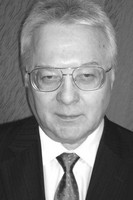Scandinavian walking application experience for Surgut seniors' physical activation and sedentary behaviour correction
Фотографии:
ˑ:
Teoriya i praktika fizicheskoy kultury №7 2017, pp.90-92
Dr.Biol., Professor S.I. Loginov1
A.Y. Nikolaev1
Associate professor, PhD M.N. Malkov1
1Surgut State University, Surgut
The present article gives IPAQ survey data for 339 seniors of Surgut city including 137 men (40% of the sample) and 202 women (60%) aged 62.25±5.65 years on average. The survey data showed the male respondents being reportedly more physically active (PA) at jobs versus the female ones who are more active and home and dachas. The female and male respondents reported predominantly moderate- and highly-intensive physical activity, respectively, with the overall physical activity and walking intensities found gender-unspecific. The male respondents were found more prone to the sedentary behaviour (2546.5 min/ week versus 2447.7 min/week reported by women). The Scandinavian walking practices were found beneficial as verified by the physical fitness test rates in the women’s Study Group.
It is highly necessary to continue observations of a larger contingent of people involving men into Nordic walking, which will help reveal the gender specifics. Individualized physical activity optimization programs are required, geared to increase physical activity and reduce sedentary behaviour. Such programs, implemented in the centers for territorial public self-government can be an effective means of optimizing the physical activity of Northern people.
Keywords: physical activity, seniors, sedentary behaviour, Yugra, IPAQ, seniors’ fitness test, Scandinavian walking.
References
- Loginov S.I., Nikolaev A.Y., Vetoshnikov A.Y. Programma povysheniya fizicheskoy aktivnosti pozhilykh lyudey v usloviyakh urbanizirovannogo Severa (KhMAO-Yugry) [Program to increase physical activity of elderly people in the urbanized North (Khanty-Mansi Autonomous Region-Yugra)]. Sb. XX Mezhdunarodny nauchny kongress "Olimpiyskiy sport i sport dlya vsekh" [Proc. XX International Scientific Congress "Olympic sport and sport for all"]. St. Petersburg. 2016, pp. 674-677.
- Nikolaev A.Yu., Loginov S.I. Uroven i struktura dvigatelnoy aktivnosti cheloveka na Yugorskom Severe (po dannym oprosnika IPAQ) [Level and structure of human motor activity in Yugra North (based on IPAQ questionnaire)]. Teoriya i praktika fiz. kultury. 2016, no. 7, pp. 86-88.
- Ainsworth B.E., Haskell W.L., Herrmann S.D., et al. Compendium of physical activities: a second update of codes and MET values. Med. Sci. Sports Exerc. 2011, vol. 43, pp. 1575–1581.
- Blair S.N. Physical inactivity: the biggest public health problem of the 21st century. Br. J. Sports Med. 2009, vol. 43, no. 1, pp. 1–2.
- Ekelund U., Sepp H., Brage S. et al. Criterion-related validity of the last 7-day, short form of the International Physical Activity Questionnaire in Swedish adults. Public Health Nutr. 2006, vol. 9, no. 2, pp. 258–265.
- Graff-Iversen S., Anderssen S.A., Holme I.M. et al. An adapted version of the long International Physical Activity Questionnaire (IPAQ-L): construct validity in a low-income, multiethnic population study from Oslo, Norway. Int. J. Behav. Nutr. Phys. Act. 2007, vol. 4. 13.
- Husu P., Suni J., Vähä-Ypyä H. et al. Objectively measured sedentary behavior and physical activity in a sample of Finnish adults: a cross-sectional study. BMC Public Health. 2016, vol. 16, no. 1, p. 920. doi: 10.1186/s12889-016-3591-y.
- IPAQ Research Committee. Guidelines for Data Processing and Analysis of the International Physical Activity Questionnaire (IPAQ) – Short and Long Forms. 2005. Available at: http://www.ipaq.ki.se/ scoring.pdf.
- Jurakić D., Pedisić Z., Andrijasević M. Physical activity of Croatian population: cross-sectional study using International Physical Activity Questionnaire. Croat Med. J. 2009, vol. 50, no.2, pp. 165–173.
- Mikalacki M., Cokorilo N., Katić R. Effect of Nordic walking on functional ability and blood pressure in elderly women. Coll. Antropol. 2011, vol. 35, no. 3, pp. 889-894.
- Milanović Z., Pantelić S., Trajković N., Sporiš G., Kostić R., James N. Age-related decrease in physical activity and functional fitness among elderly men and women. Clin. Intervent. Aging. 2013, vol. 8, pp. 549–556. doi.org/10.2147/CIA.S44112.
- Nawrocka A., Mynarski W., Cholewa J. Adherence to physical activity guidelines and functional fitness of elderly women, using objective measurement. Ann. Agricult. Environ. Med. 2016. doi: 10.5604/12321966.1231388.
- Rikli R.E., Jones J.C. Senior Fitness Test Manual, 2nd ed. Champaign, IL: Human Kinetics. 2013.
- WHO. Global status report on noncommunicable diseases. Geneva, Switzerland: World Health Organization. 2014.




 Журнал "THEORY AND PRACTICE
Журнал "THEORY AND PRACTICE